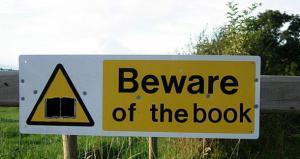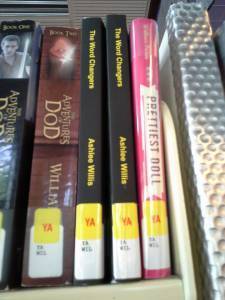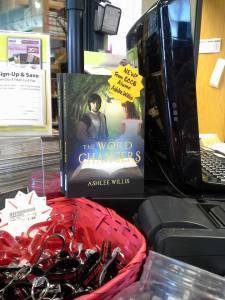Ashlee Willis's Blog, page 9
October 17, 2014
Books Are Dangerous
Books can be bliss. Books can be a wonderful escape. Books can be deadly dangerous.
I’m not sure about you, but I’m addicted to books. I know of many people who are afflicted by this madness as well. It’s not really curable, and I’ve never been quite clear on whether that’s because it’s impossible, or just the fact that people simply don’t want to be cured of it.
Books have blessed me with countless hours of laughter, happiness, heart-thumping excitement and soul-wrenching sorrow. They have given me what I consider to be some of the richest times of enjoyment in my life.
So why are they so dangerous?
For someone like me who is immersed in books, it is easy to lose your way. The characters within them can become more real than the people in your life. The adventures in them can make your own life dull in comparison. The satisfaction of happy endings can distort your real-life expectations.
Don’t get me wrong. Books offer us much. New worlds, ideas, emotions and thoughts. The epic romance, the love at first sight, the evil that is always punished, the bad guy who is always caught, the ending that is always happy. I don’t blame you for wanting that. I want that. And it’s not something we’ll find very often, if at all, outside the covers of a book.
And this is where the danger lies.
Books teach us to expect these things. Books teach us not to settle, not to give in, until we have found these things. They promise that things like true love and happy endings are always attainable, if we could only find the right person, if we were only in the right circumstance, if we were only …. If only …. If ….
For though we walk in the flesh, we do not war according to the flesh, for the weapons of our warfare are not of the flesh, but divinely powerful for the destruction of fortresses. We are destroying speculations and every lofty thing raised up against the knowledge of God, and we are taking every thought captive to the obedience of Christ. (2 Cor 10:3-5)
You see, our war is within. It’s a subtle one—you can’t hear it raging, most times. But it’s there. And our own thoughts will turn against us if we  don’t take them captive, bend them to our own will.
don’t take them captive, bend them to our own will.
If I get annoyed with my husband because he doesn’t give me the deep and mysterious affection that Mr. Rochester gave Jane Eyre, or because he doesn’t change for me as Mr. Darcy did for Elizabeth, that’s no one’s fault but my own. It’s wrong for me to have those thoughts, the thoughts that books put into my head, the ones that I allow to control my expectations of real-life people.
Admit it, it’s a little bit funny, isn’t it? To know that a book can change the invisible pathways of my mind? To know that I want my husband to be just a bit more like Mr. Rochester? To admit that my life frustrates me and makes me want to cry like a child who hasn’t got her way when things don’t go right?
I think Satan must think it’s funny, too, watching as I’m separated from God’s plan for me. Watching as I grow bitter with life and friends and the people I’m supposed to be showing God’s love, all because I want someone to sweep me off my feet, or because my life is not the adventure I’d like it to be, or because I must watch as someone I’m close to suffers an ending that is anything but happy.
Books. Are they right or wrong to teach us these things? Right or wrong to make us long for … more?
Watch over your heart with all diligence, for from it flows the springs of life. (Proverbs 4:23)
Books. Dangerous or not? Do they lead us to neglect the springs of life from our own hearts, and make us instead focus our eyes on the imaginary, the unattainable?
No.
Books, when all is said and done, don’t control your mind. Media doesn’t control you mind. Your mother, your father, your spouse, your friends—they don’t control it either. Only you, and only God. And even God will not force His way in unless you invite Him. So it’s your choice, then. Just as God intended.
Trust in the Lord with all your heart and do not lean on your own understanding. (Proverbs 3:5)
Trust in the Lord … that’s the key, isn’t it? Keep your eyes on Him. Read books, enjoy books, love books … but keep your eyes on God and His Kingdom.
This world isn’t likely to offer you the epic romances you read about. It’s certainly not going to solve every crime and punish every criminal. And ask anyone … happily-ever-afters are but a myth.
We live in a world of sin and darkness.
But God is not vanquished by sin, and His light is not to be put out. What we look for in books and fail to find in real life—we may find in Him.
God gives us the fullest, most all-consuming love. He pursues us with relentless passion and gentle steadfastness. Isn’t that just what any true romantic longs for in the end?
God is the ultimate judge. Bad guys go free on earth too many times. But don’t believe for a moment that means their sins will go unpunished.
God is the creator of mystery, and therefore the solver of it. We should revel in His creation, even the mysteries of it, and look forward to one day having Him explain them to us.
Lastly, God is the maker of happy endings. Some of them do happen here on earth—some of them even rival the best books we’ve ever read. But nothing compares to the Final Happy Ending that we as Christians have to look forward to. Not a single book on earth can hold a candle to that.
All their life in this world and all their adventures in Narnia had only been the cover and the title page: now at last they were beginning Chapter One of the Great Story which no one on earth has read, which goes on forever, in which every chapter is better than the one before. (C.S. Lewis, The Last Battle)
This world is not our home. It is not where we belong. Books tell us of other worlds—let us not forget the one we are in, nor the one we are going to. Books give us happiness—let us not forget where our eternal happiness lies. Books tell us of adventures and heroes—let us not forget that the life God gave us is the greatest adventure of all, and that the only hero we need is our Savior, the maker of the truest Happy Ending.


October 13, 2014
A Thing or Two About Fauns and Satyrs
Satyrs are associated with the god Dionysus. Fauns are more often associated with the god Pan (or Faunus).
When it comes to partying, fauns love to dance and play music on flutes and tambourines. Satyrs, however, party a bit harder. They have
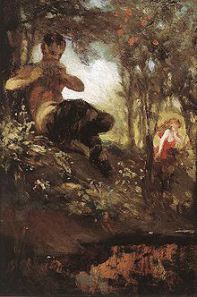 a strong fondness for wine, and tend to chase women …
a strong fondness for wine, and tend to chase women …Satyrs tend to laugh at everything, and hold nothing in reverence. Their name is where the word “satire” originated from.
Fauns are more low-key and peaceful than their raucous satyr cousins. They generally prefer to live in harmony with nature and others.
The god Pan (and its Roman counterpart Faunus) was a satyr, the god of all wild creatures. It’s said that his temper could inspire pan-ic in all who heard him.
Both satyrs and fauns are usually depicted with horns, although some say a faun has natural horns, whereas a satyrs has to earn his.
Fauns are forest dwellers, and have sometimes been known to be guides to humans.
Satyrs are mischief-makers, but are also generally thought to be more knowledgeable than fauns.
When satyrs arrived at an advanced age, they are referred to as Sileni.
Sometimes shepherds would sacrifice the firstlings of their flocks to satyrs, but more commonly they would just offer grapes or apples. They would also make songs addressed to satyrs in hopes of appeasing them.
The writer, Horace, claimed that Faunus (the father of fauns) was the guardian and protector of men of wit. Virgil says that Faunus was a god of oracles and predictions.
Fauns and Satyrs in Literature:
Tumnus in The Lion, the Witch and the Wardrobe by C.S. Lewis (faun).
Grover Underwood in the Percy Jackson series by Rick Riordan (satyr).
Satyrs feature in Fablehaven by Brandon Mull.
A satyr carved into the door of a cabinet is a character in Hans Christian Andersen’s “The Shepherdess and the Sweep.”
In Peter S. Beagle’s The Last Unicorn, the Satyr is one of the Creatures of the Night, Brought to Light.


October 10, 2014
First Drafts and Dragons
Well, my friends, I am feeling a strange mixture of utter relief and tension right now. It’s the feeling that comes when a first draft is finished (relief), and edits loom large (tension) ….
Yes, you heard me. Mere minutes ago I typed the last sentence of my book. It is the second of a series I am working on (I finished the first draft of the first book earlier this year). It’s a thrilling feeling, to say the least! Especially as this is a bigger undertaking than I’ve ever tackled before. From a girl who has written only standalones, a series is a daunting task. As of now I have written the first two books, and have many plans and ideas for the third book, although it may be a while before I begin officially working on it.
What, you ask, are these books about? Well, I’m always a bit reluctant to say much about my WIPs while they are still in first-draft form – even to my own family! But I will give you a few clues.
Firstly, there are dragons. And anyone who knows me knows how much I adore dragons. I’ve longed to put them in a book for many years, but 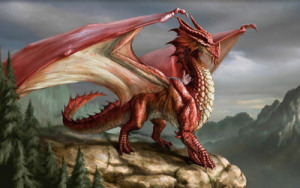 hadn’t found the right story for them until now. And I’m so excited about them, although to be honest, a little nervous about how I’ve pulled it off …!
hadn’t found the right story for them until now. And I’m so excited about them, although to be honest, a little nervous about how I’ve pulled it off …!
Secondly, and probably obviously, these books are of the Christian fantasy genre, just as The Word Changers was. There is an element of allegory, an element of mystery, a great deal of adventure and intrigue and danger, and a bit of romance.
Thirdly, these books are told from multiple points of view. There are two protagonists – one is a male and one is a female. The story is told alternately from their viewpoints, something else I’ve wanted to do for a long time but didn’t quite have the courage for. The male viewpoint was a difficult one, and when I’m editing I’m sure I will have to sharpen his voice and think many manly thoughts in order to get it just right …! Perhaps some of the men in my life will be willing to read the book and offer their wisdom! ;) ;)
I am giving myself a week or two off before I begin edits. And by “off,” I mean that I will probably just tackle another writing project while I wait. A short story, perhaps … or maybe a brand new book. I’ve got ideas for both of those things rattling around in my brain right now, so we’ll see.
So thanks to those who prayed for me and encouraged me as I struggled through the ending of this book (you know who you are!), and to those of you who I pray get to read these labors sometime in the distant future. I truly couldn’t do it without you, or without God, the true Author of all our stories.
Have a blessed weekend!


October 6, 2014
Hunger Games vs. A Time to Die
This is a guest post by Nadine Brandes, the author of the newly released dystopian novel, A Time to Die.
____________
“What’s your book about?”
My most common response: “It’s like Hunger Games, only Christian.”
This is rather ironic since half the inspiration behind A Time to Die came from wanting to write a book unlike Hunger Games. Don’t get me 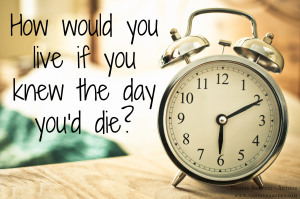 wrong — I devoured the Hunger Games series. I’ve watched both movies multiple times, I obsess over every released picture, trailer, or tidbit from the upcoming Mockingjay films, and I even have a mockingjay pin.
wrong — I devoured the Hunger Games series. I’ve watched both movies multiple times, I obsess over every released picture, trailer, or tidbit from the upcoming Mockingjay films, and I even have a mockingjay pin.
But, I threw book three, Mockingjay, against the wall when I finished it. Hey, I know several others who did this same thing. Maybe even you.
Why?
Because the story lacked hope. Those books progressed into a darker and darker place, ultimate ending despair with a sprinkle of bittersweet-ever-after.
That wasn’t enough for me. I needed to know that standing up for my beliefs, that striving for more, that fighting for justice was worth it. That humans could make a difference and that goodness could be found in the world.
I know Christ. I know it’s possible. So I wrote about it. Here are some similarities and differences between The Hunger Games and my own dystopian novel, A Time to Die.
Similarities
They are both dystopian (duh)
Both Katniss and Parvin are striving against an unjust society for the purpose of protecting the people they love.
Both books examine the struggles that minority people groups face against a controlling government.
The government in both books has a special power that can control the decisions and cooperation of the people. In Hunger Games it’s the Hunger Games, in A Time to Die it’s the Clocks.
The Hunger Games is about Katniss’s external fight against her government (and her impending doom) to survive and make a change.
A Time to Die is about Parvin interally seeking the meaning of life, trying to understand the purpose of her existence.
The Hunger Games – Katniss draws her hope from her sister, Prim, and from her love interests, Gale and Peeta. Her hope is completely tied up in these people and of course, because they’re human, they can’t uphold that weight.
A Time to Die – Parvin learns to draw her hope from faith in God. And, despite tragedy and the failure of humans, His power withstands the weight of human sorrow.
In The Hunger Games, Katniss is a survivor. She’s been raised hunting, shooting and making bows and arrows. She never cries, she’s the leader of her family. This is a common trait in female dystopian protagonists, but a not-so-common trait in real teenage girls reading.
In A Time to Die, Parvin is as human as they get. She has doubts about life, about God, about her purpose. She’s afraid, she’s never even gone camping, and she’s been raised in the comfort of home with a solid family. While she tries to be strong emotionally, she’s human and she breaks when she’s alone.
Not only is this difference in the books, but it’s a difference in our lives – in our thinking – as believers in Christ. Because Christ is my hope, it forms the stories I write. This is the beauty behind Christian fiction. I’m honored to be part of it.
What books have left you hopeful? What books have left you hopeless?
____________
To find out more about Nadine or her book, visit her at one of these places:
Blog Goodreads Amazon Facebook Twitter
September 29, 2014
A Thing or Two About the Phoenix
1. A phoenix can live between 500 and 1000 years, at the end of which it will build a nest and ignite, burn fiercely, and be reborn from its own ashes.
2. The Roman poet Ovid maintained that the phoenix was not necessarily reborn from its own ashes, but that it would burst into flames while giving birth to a newborn phoenix.
3. According to Greek mythology, the phoenix lived in Phoenicia near a well. In the morning it would bathe in the well and sing its melodious song, which was so beautiful that the sun god, Helios, would stop his chariot to listen.
4. A phoenix’ cry is like a beautiful song.
5. The phoenix, unsurprisingly, is mostly used to be symbolic of rebirth, resurrection, and immortality.
6. Fitting so closely with Christian themes, it is no surprise that Christians have used the phoenix as a symbol for many centuries. Pope St. Clement (in 96 A.D.) used the phoenix to prove Jesus’ resurrection (hmm …).
7. Jewish culture also has a story about the phoenix (Hol). It was the only animal allowed to remain in the Garden of Eden, all because it refused to eat the forbidden fruit. For its obedience, God granted it immortality.
8. In ancient Greek and Egyptian mythology, the phoenix is associated with the sun god.
9, What does it look like? Many accounts agree a phoenix is of about the size and general appearance of an eagle, although different cultures and accounts describe it also as looking like a heron, a peacock or a stork. The French author Voltaire describes it as having mild and tender eyes, plumage of a thousand shades of gold, and feet of purple and silver.
10. What does it eat? Ovid said it ate only frankincense and gums. Others say it lives off only dew. Some say it eats nothing at all.
11. Phoenixes in literature: The Phoenix Bird by Hans Christian Andersen, Harry Potter series by J.K. Rowling (Fawkes), The Phoenix and the Carpet by E. Nesbit, The Tempest by William Shakespeare.
12. In zoology, there is an animal family called Phoenicopteridae (of which flamingos are a part), which means “phoenix-winged.”
13. It is said by some that only those who possess magic abilities can call on a phoenix in times of need.
14. During the Renaissance, the phoenix was a popular emblem of people like Queen Elizabeth I (who used the phoenix as a royal badge) and even Joan of Arc. The phoenix has also been used through the ages as a symbol on both family crests and shields.
15. During the Classic time period, the name of the phoenix was associated with the color purple.
16. Many cultures believes that only one phoenix can be in existence at a time.
What a rich canvas of possible meanings and story ideas! The phoenix is definitely a mythical creature I’d love to write about one day. How about you?!


September 23, 2014
Dystopian Book Review and Giveaway
It’s release day for Nadine Brande’s dystopian debut novel, A Time to Die!! The eBook is available here, and the paperback version is available now, here, for pre-order (releases officially October 1st). Nadine is hosting a Facebook launch party tonight from 4-6 (Pacific Time). She’ll be posting some fun things every 10 minutes, and answering questions and comments throughout. You should definitely join us!!
Also in honor of this exciting new book, I’m giving away a journal, which is pictured at the bottom of this post … so be sure to enter your name if you’d like a chance to win it! Click here to enter, or scroll to the bottom of the post to see the picture of the journal; there’s a link for the giveaway, too :)
Here’s my review!
_________
“Eighteen dead years. Why didn’t I see them dying? Why didn’t I feel my time wilting? I spent so much of my time lounging in regrets and sipping bitterness that I abandoned any thought of creating happy memories; instead, I wasted. Just wasted.” (Nadine Brandes, A Time to Die)
Many times while reading A Time to Die I felt as if someone had taken me by the shoulders and shaken me until my teeth rattled, until my eyes focused in a different way and I was seeing not only the story I was reading, but the entire world around me, in a completely new way.
This Christian dystopian book is honestly, blatantly yet gently infiltrated with Bible verses, Parvin’s (the main character) growing relationship to God, and even God’s Voice as He speaks to her through the Holy Spirit. Parvin’s search for God’s will in her life as she lives out what she knows to be her last year is both desperately painful and wonderfully rewarding. Gutting, in other words.
The concept of the story itself is just utterly amazing. Everyone knows the exact moment they will die because they each have a clock from the moment they are born which tells them how long they’ve got to live. Science has delved into an area of knowledge meant only for God and – as when anything strays from God’s plan – things go horribly wrong. It was this concept that drew me to the book in the first place … as a writer myself I saw the tremendous potential of such a theme – knowing the exact moment you would die?! – and I wondered where Nadine would take it. I definitely wasn’t disappointed!
The worldbuilding in this book is exceptionally well-developed and impressive. The landscapes are richly-detailed and varied, from forests to rivers to cities to primitive settlements. There are some truly creative fictional inventions in the book as well … my favorite of which is the emotigraph. The emotigraph is a device that takes a “picture” of the emotion you are having at a particular moment, and then you are free to go back and revisit – actually feel again – that emotion at a later time at the push of a button. Didn’t I say creative?!
There is a huge amount of adventure and action in this story, sometimes thrilling, sometimes terrifying. Without including spoilers, I will just say that Parvin must endure some terrible hardships before she gets to her journey’s end. And the book is written so starkly and so well that it’s hard not to feel as if her hardships are not your own … which leads me to another great thing about this book: the writing.
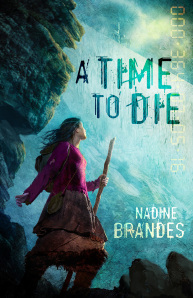 Nadine’s style of writing is refreshing, descriptive, clean and polished. She has a way of making her words carry you in waves of emotion, drama and pain. More than once I found myself gasping aloud, or holding my breath with anticipation, ord wiping tears away. I normally read like a writer … critical, questioning, attentive to details and wording and structure. But Nadine’s storytelling caused me to throw most of that out the window. These days there’s not many books that grab me hard enough to do that – just FORCE me to read like a reader, and push aside that pesky writer-self. A Time to Die did.
Nadine’s style of writing is refreshing, descriptive, clean and polished. She has a way of making her words carry you in waves of emotion, drama and pain. More than once I found myself gasping aloud, or holding my breath with anticipation, ord wiping tears away. I normally read like a writer … critical, questioning, attentive to details and wording and structure. But Nadine’s storytelling caused me to throw most of that out the window. These days there’s not many books that grab me hard enough to do that – just FORCE me to read like a reader, and push aside that pesky writer-self. A Time to Die did.
Best about this book is Parvin’s journey toward God. She begins the book both physically and spiritually weak, unprepared for the hardships ahead. But she grows in a wonderfully realistic way, ever closer to God. And though the book ends with sadness and confusion and turmoil, hope is still shining, and it’s obvious that God’s will still reigns supreme. And as there are two more books in this series, I’m already anticipating where the rest of the story will go …
I dare you to read this book and not feel an invisible tug – a tug on your eyes to open wider, a tug on your sense of adventure, a tug on your heart to push past the world’s limits and live the life God meant for you alone.
“It’s time to take a step. God destined me for greatness.” (Nadine Brandes, A Time to Die)
____________
FIND THE BOOK HERE:
AND THE AUTHOR HERE:
Blog Facebook Twitter Newsletter
____________
CLICK HERE to help us spread the word about Nadine’s book, and for a chance to win this CLOCK JOURNAL (Open to US residents only … sorry!)


September 19, 2014
A Thing or Two About Unicorns
There are very few mythical creatures considered to be “good” in all different stories, cultures/traditions. But the unicorn is one of them.
The unicorn itself represents many things in different stories. Most commonly, the unicorn is a symbol of purity and virtue.
In the Middle Ages, the unicorn became a religious symbol, especially in art. A beautiful woman (who represented the Virgin Mary) captured a unicorn, and when it was tame it laid its head in her lap. Through the years, this story grew. The unicorn began to represent Christ, the death of a unicorn was likened to the Passion of Christ.
A group of unicorns together is called a “blessing” of unicorns.
A unicorn’s single horn can be meant to represent many different things. Among them: heraldry, unity, the cycles of time, endlessness, and the sword.
Unicorns’ horns are said to be magic. They are harder than diamonds, and have the ability to neutralize poisons.
If you are fortunate enough to see a unicorn, you may be granted a wish.
The tears of a unicorn have the ability to heal both physical ailments and sorrows of the heart.
In the early 1600s, the Dutch theologian, Petrus Plancius, included the unicorn constellation, “monoceros,” on his celestial globe.
Unicorns in real life? Alexander the Great claimed to have rode a unicorn into battle, the famous explorer Marco Polo claimed to have
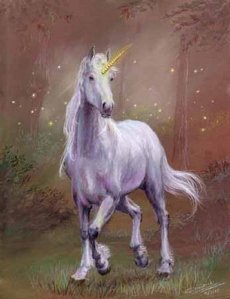 encountered a unicorn (although his description fits that of a rhinoceros rather closely …), Julius Caesar said he saw a unicorn in a forest in Germany, a unicorn “appeared” to Confucius’ mother, foretelling his birth, and later “appeared” to Confucius himself, foretelling his own death.
encountered a unicorn (although his description fits that of a rhinoceros rather closely …), Julius Caesar said he saw a unicorn in a forest in Germany, a unicorn “appeared” to Confucius’ mother, foretelling his birth, and later “appeared” to Confucius himself, foretelling his own death.Unicorns are said to be able to tell the truth from lies. When confronted with a liar, the unicorn will pierce the liar through the heart with its horn.
For many years, unicorn horns were sold for their medicinal properties, although most of these turned out to be the horns of goats, cows, or even narwhals.
Queen Elizabeth I is said to have owned a unicorn horn. And the throne of Denmark was supposed to have been made from unicorn horns.
Legend says that Noah would not allow unicorns onto the ark, and that is why they are extinct today.
There are quite a few references to unicorns in the King James version of the Bible, although more modern versions translate “unicorn” into “bull” or “oryx.” (Numbers 23:22, Job 39:9, Psalm 22:21, Isaiah 34:7, among others).
Being a reader and writer of Christian allegory, I can’t help but imagine some of the ways unicorns could be used symbolically in stories. Can you? I may have to keep that in mind for my next book …
What’s your favorite mythical creature? Does it lend itself to a deeper meaning in a story you might like to read or write?


September 13, 2014
Book Sightings and Library Love
A couple of weeks ago I went to my local library and saw, for the first time ever, my own book on the library shelf! And not just one copy … two! I was pretty excited, as you can well imagine!
When I visited my alumni college (later that same day, as it happens), an old friend I was speaking with there informed me that he had seen my book for sale in the college bookstore … on display, on the front counter! I’m only a little ashamed to say that I squealed and immediately drug my husband and son to the bookstore to see it. Wouldn’t you have?!
Having my book for sale in a book store is exciting, but I’ve got to say that seeing my book on the shelf of a library, with the potential to go through the hands of dozens, possibly hundreds of readers … now that’s really a dream come true. Libraries have always meant so much to me, the scent of papers and ink, the whisper of pages being turned, the hum of silence, the solid walls of books all around. Paradise, really. What a privilege for my book to now have a home in one of my favorite places on the planet!
Many of you have read The Word Changers already, and a lot of you who haven’t have said you’d like to one day. If you haven’t had the chance yet, have you considered submitting a request to your own local library to purchase a copy? I’ve done that many times in the past for books that I’ve considered reading, but was on the fence about forking my own money out to buy. And 9 times out of 10, my library goes on to purchase the requested copy.
Most of the time you only need the requested book’s title, author, and year published. But if you decide to put in a request for The Word Changers, and your library requires more information, click here :)
I can’t tell you the pleasure and honor I’d feel knowing my book was on the shelves of libraries across the United States, or even in other countries! What a thrill!
And just for fun, here are some great library quotes:
HAVE A GREAT WEEKEND!!


September 8, 2014
If I Had One Year to Live
In honor of Nadine Brande’s brand new Christian dystopian novel, A Time to Die, I am taking part in the How Would You Live blog hop. Nadine’s book is truly special and thrilling, and I will be posting my review of it here on my blog on the day it releases (Sept. 23), along with a giveaway.
A Time to Die deals with the theme of living and dying … do we take every moment God has given us and use it for His good, or do we waste our lives, squandering the time allotted to us? These questions are brought into sharp focus when you consider your life in terms of time – days, hours, minutes. What if the time left to you was only a year? What would you do with it?
Here are my thoughts.
____________
Five years ago my best friend died.
I’ve never written about her, and only in the last year or so have I begun to speak much of her death, even to those closest to me. Everyone around me knew I was grieving, and they also knew that, for a long time, my grief was too deep for words. She was a part of
me, a sister in all but blood, and I truly loved her. Even now, typing these words, my heart still bleeds a little for missing her.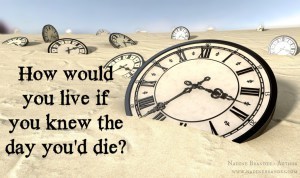
In the three short years that she sickened and declined, we were living far apart. I was able to visit her a handful of times, enough times to watch in awe as she laughed good-naturedly about her surgery scars and cracked jokes about her hair loss. I wondered how she could do that – look death in the face so lightheartedly. Because I myself felt a gripping, paralyzing fear for her and for the loss of her that I dreaded. But she … How could she, who left behind a husband and a young child, take the time out of the dwindling days left to her and spend it at a hospital comforting those sicker than she? How could she bear to take even one precious hour away from her family in order to speak to me on the phone and listen, patient and understanding, while I spoke of my own petty day-to-day concerns?
It blew my mind. And if I’m honest, I’ll say that it scared me. She lived so much life in the little time she had, and an astounding amount of it was for others, though many didn’t even see it until it was too late, and some never saw it at all. She didn’t have much time … a couple of decades and a handful more years … and instead of hoarding it when she knew it was slipping away … she gave it.
When I saw the theme of Nadine’s blog hop, my first thoughts went to my dearest friend, and the admirable – no, the graceful – way she lived the last year of her life on earth.
There are many who would rush to travel, to experience and taste, to live on the edge, perhaps even pursue danger and thrills, knowing their last 365 days lay ahead of them.
Me? I hope that my last days would be days of grace, and of love. Of forgiveness and mercy. Days that reach gentle fingers and touch – and touch again – those around me, whether family or friends or strangers.
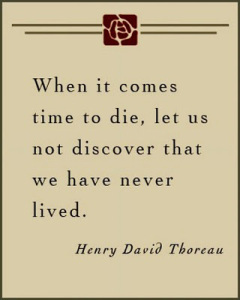 I would hope to live my love more acutely than I do now, to find the bravery to speak it, the strength to overcome anything that would stand in its way or distract me from it. I think many of my desires would die, upon knowing I lived my last year. The desires to travel and see and experience … they would fade to nothing in the brighter light and warmth of the things that mean the most – my family, my loved ones, my God.
I would hope to live my love more acutely than I do now, to find the bravery to speak it, the strength to overcome anything that would stand in its way or distract me from it. I think many of my desires would die, upon knowing I lived my last year. The desires to travel and see and experience … they would fade to nothing in the brighter light and warmth of the things that mean the most – my family, my loved ones, my God.
I may not be able to shake the world or start a revolution or write a bestseller or end a war … but I could touch those few around me. Genuinely, honestly, with utter and unconditional love. And I could hope and pray that my love – God’s love – would pass through me to them, and through them to others, and on and on until a small piece of the world, at least, shines brighter for it.
That’s what my friend did in her last days. She had such strength, even in her youth, such clarity and love. I was confused by it for so long, terrified at the brightness of it, ashamed that if it had been me in her circumstance I’d have hidden myself away like a chastened, cowardly child, fearing death, fearing even the life left to me.
But I see now what I didn’t then. She was a vessel, and though she was strong, her strength was not her own. Though she loved deeply, the love she gave was God’s.
And whether it be my last year, or my first of many more to come, I hope I can learn to live that way, too, a little more each day.
____________
Now comes my invitation to you … write your own post and join the How Would You Live blog hop. Finish the statement, “If I had one year to live, I would ….” You can simply post it for your followers to see, or if you’d like to officially join the blog hop, send Nadine an email and she’ll add your name (find her info below).
____________
How would you live if you knew the day you’d die?

Parvin Blackwater believes she has wasted her life. At only seventeen, she has one year left according to the Clock by her bedside. In a last-ditch effort to make a difference, she tries to rescue Radicals from the government’s crooked justice system.
But when the authorities find out about her illegal activity, they cast her through the Wall — her people’s death sentence. What she finds on the other side about the world, about eternity, and about herself changes Parvin forever and might just save her people. But her clock is running out.
This is book one in the “Out of Time” trilogy (subsequent volumes coming in 2015 and 2016).
Find the author here:
Blog Facebook Goodreads Twitter Newsletter


September 5, 2014
Affection and Concern for a Marshwiggle
It’s always with a bit of trembling that I hear of another Narnia movie being produced. Part of my nervousness comes from excitement, part from fear.
The creatures and characters of Narnia mean a great deal to me, and I want to know they are in capable, loving hands … hands that appreciate them for what Lewis created them to be, not what the director feels will look best or be most impressive on the big screen.
Rumors of the movie, The Silver Chair, have been around the past few months, and I find myself fearing the outcome. Why? Well, mostly because it’s in The Silver Chair that my favorite Narnian character makes his first appearance …..
Puddleglum.
What will the writers and director do with my wonderfully quirky, endearingly cynical, terribly brave Marshwiggle??! Will they give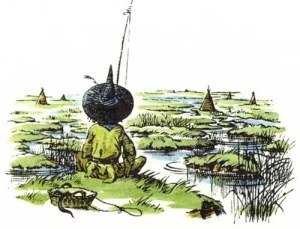 him the respect and care he deserves? Will they see and portray him as the creature of depth and faith that he truly is? And – on a more superficial note – who will they cast to play him, and what will he look like?
him the respect and care he deserves? Will they see and portray him as the creature of depth and faith that he truly is? And – on a more superficial note – who will they cast to play him, and what will he look like?
Ah, the worries of a Narnian.
My sister and I grew up watching the original Narnia movies, although we didn’t see them until they had been out several years. They have more than a whiff of 90’s influence and corniness in them, not to mention they were probably quite low budget as well. But they are still beloved, all the same (though as an adult I have to giggle quite a bit at rather inappropriate places). The Puddleglum of my own imagination is a bit different than the one portrayed in the 1990 film, but I still think Tom Baker did a great job:
How do you picture Puddleglum, whether you’ve seen the old movies or only read the books? Any ideas on who would be a good actor to cast for him in the upcoming version of The Silver Chair?



